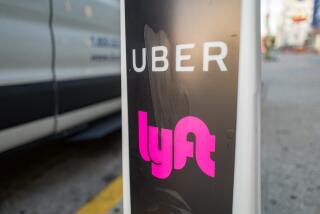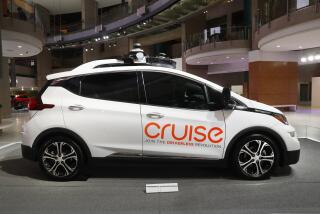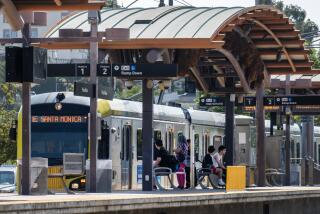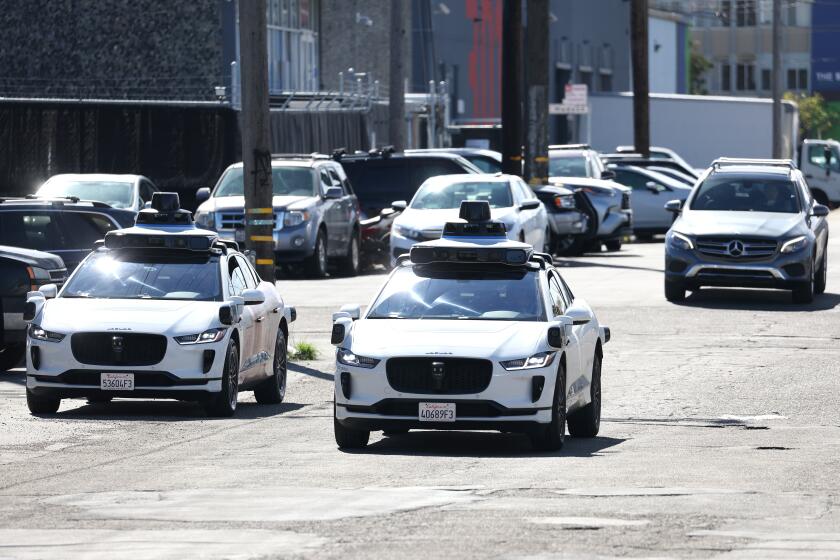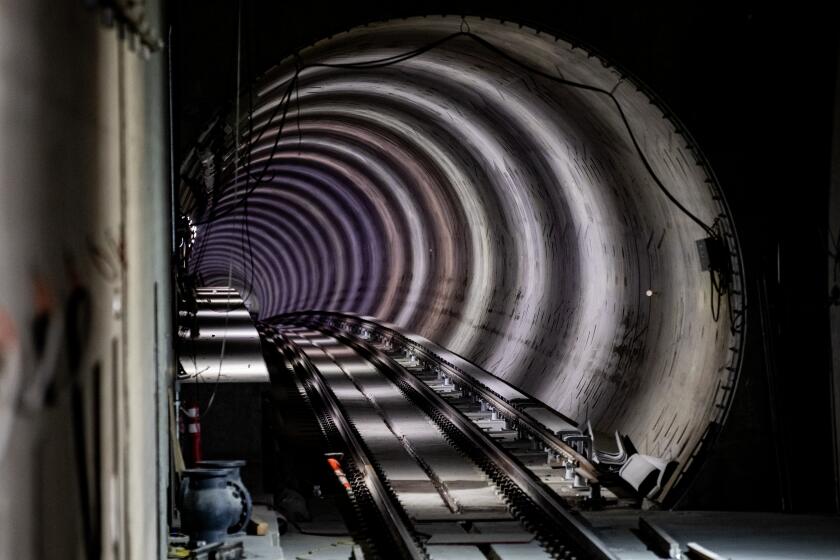Uber targets commuters with cheaper pooled rides, price-lock pass
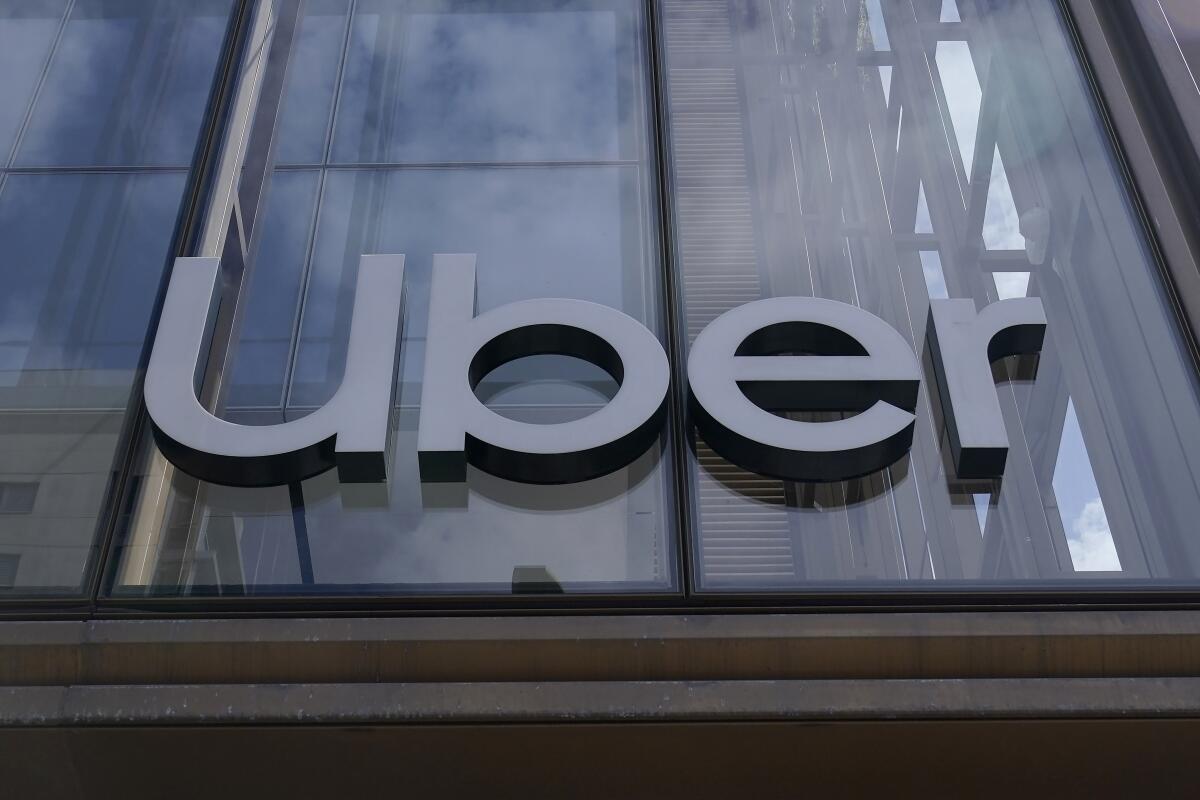
- Share via
Uber Technologies Inc. is introducing a cheaper pooled rides option and a price-lock pass for commuters, underscoring its focus on attracting more daily users as consumers confront rising costs.
The San Francisco-based rideshare company on Wednesday announced “Route Share,” a budget-focused offering that’s up to 50% cheaper than a regular UberX and only available during weekday commuting hours.
In contrast, its existing pooled rides option cuts costs as much as only 20%. But there’s a catch: Route Share pickups run every 20 minutes only “along busy corridors,” similar to a bus, and passengers may have to walk up to 15 minutes to the pick-up point and share a vehicle with two other people.
The Transportation Network Company Drivers Labor Relations Act, set to be introduced Tuesday, is backed by SEIU California and would seek to allow drivers to collectively bargain.
It’s launching Wednesday in New York, San Francisco, Chicago, Philadelphia, Dallas, Boston and Baltimore, with more cities to come, Uber said. The company hopes to work with employers to make the product eligible for pretax commuter benefits. Unlike its shuttle bus service between airports and downtown, Route Share rides will be in regular cars driven by independent contractors rather than shuttle operators.
In addition, Uber said it will launch a pass for passengers to lock in fares on as many as 10 distinct routes, confirming an earlier Bloomberg News report. It will be available in 10 U.S. cities to start, including San Francisco, Washington and Miami, before gradually spreading to other U.S. markets and also Brazil.
In the summer, Uber said, it will provide deeper discounts if users pre-pay for trips on a fixed route in increments of five through 20. For example, a prepaid pass for five rides on a fixed route will offer a 5% discount, and a prepayment on 20 will come with a 20% discount.
Uber has been competing with smaller rival Lyft Inc. to offer different flavors of its rideshare product to win over customers with assorted needs and budgets. Commuters have emerged as key customers for their services, according to the companies. Commutes on Uber represent about 3 billion trips globally, or just under 30% of all its ride-hail and delivery trips in 2024. For Lyft, those rides made up more than a third of total trips in the first quarter.
Meanwhile, investors have been watching how souring consumer sentiment might affect Uber’s rideshare business in the U.S. after the company said travel spending has slowed more there than in international markets.
A Gridwise survey report in February showed that a majority of customers would curb or cut out ride-hails if Uber and Lyft prices in the U.S. increased further beyond a 7.2% jump in 2024.
Lyft discontinued pooled rides in 2023, but its monthly price-lock pass has proved popular with commuters since its launch last August. Price-lock subscriptions jumped 21% in the first quarter from the prior quarter, the company said when it reported quarterly earnings last week.
For Uber, the more complex pooled ride scenario designed for commuters will one day “make sense” for shared trips by autonomous vehicles, said Chief Product Officer Sachin Kansal in an interview. He said Uber plans to introduce pooled rides on Volkswagen’s driverless ID Buzz electric vans when the service is commercially available in Los Angeles in 2026.
Also on Wednesday, Uber announced a new “Dine Out” restaurant reservation feature, powered by Booking Holdings Inc.’s OpenTable as part of an earlier-announced partnership. Uber One members will gain priority access to book reservations in certain markets, while OpenTable customers can get discounts on Uber rides for a limited time.
Competition in that space is also set to grow with food delivery rival DoorDash Inc. planning to add similar functionality with its pending acquisition of hospitality tech company SevenRooms Inc.
Lung reports for Bloomberg.
More to Read
Inside the business of entertainment
The Wide Shot brings you news, analysis and insights on everything from streaming wars to production — and what it all means for the future.
You may occasionally receive promotional content from the Los Angeles Times.

